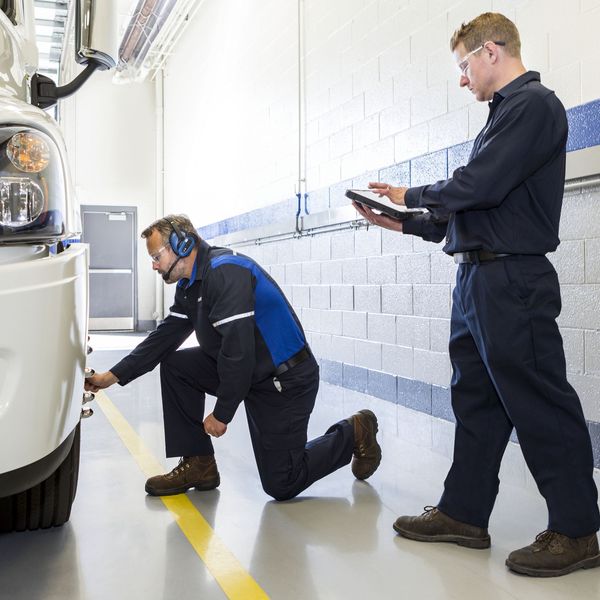Why Wheel Alignments Matter

Maintaining proper wheel alignment has a direct effect on safety, fuel efficiency and performance. Alignments require fine-tuning the suspension system that connects the truck to its wheels to ensure that all tires meet the road at the correct angle.
“Equipment that is out of alignment can experience irregular and/or accelerated tire wear, excessive suspension wear, reduced fuel economy, driver dissatisfaction, pulling, vibration and other related issues,” said Chris Hough, vice president of maintenance design and engineering for Penske Truck Leasing.
Class 8 truck alignments should be checked periodically. “Our technicians inspect for misalignment during PMs, looking for signs of irregular tire wear on the drive and steer axles and various inspection points,” Hough said.
Alignments are also essential after any type of collision. The benefits of proper alignments include:
Tire Longevity: Misalignment accelerates uneven tire wear, leading to premature tire replacement and higher operating costs. It also increases the chance of an over-the-road failure. Misaligned wheels create additional rolling resistance, forcing tires to flex more as they rotate and generating extra heat, which is one of the leading causes of tire blowouts.
Fuel Efficiency: Because misaligned wheels increase rolling resistance, they force the engine to work harder, burning more fuel. Even slight improvements in fuel efficiency can result in significant cost savings.
Handling and Driver Safety: Correct alignment enhances steering responsiveness and vehicle stability. Poor handling can be dangerous, particularly in adverse weather or on uneven roads.
Reduced Driver Fatigue: A well-aligned truck tracks straight and requires less steering correction, making equipment easier to handle and reducing driver fatigue.
Suspension and Steering Health: Regular adjustments can prevent the premature failure of critical components, which can lead to over-the-road failures or safety issues.
Alignments require specialized, heavy-duty equipment that uses computerized sensors and cameras to measure wheel angles. After an alignment, maintenance technicians may also need to reset or recalibrate advanced driver assistance systems, such as lane departure warning, collision avoidance and adaptive cruise control. If the alignment changes the angle or height of the truck even slightly, it can throw off sensor readings and create false warnings or alerts and improper interventions.
Interested in how Penske Collision Repair can get you back on the road faster? Explore our collision repair page to learn more.
